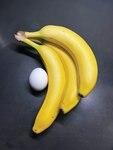

It seems like every time I open up social media, I see posts or videos with gardening advice. Sometimes the advice is good, but sometimes it’s useless or even harmful. But how to know which tips to follow and which to ignore? Read on for some science-based information about common gardening myths.
One of the most common tips I’ve seen on social media is to use eggshells or antacid tablets containing calcium carbonate when planting tomatoes, to prevent blossom end rot. The logic is that blossom end rot is the result of a calcium deficiency in the fruit, so adding calcium-rich ingredients to the planting hole will give your tomatoes a calcium boost. In reality, most Minnesota soils have plenty of calcium for garden plants – it’s just that consistent watering is needed in order for calcium to efficiently travel through the roots and reach the tomato fruit. So if you have a blossom end rot issue, focus on keeping plants evenly moist rather than adding calcium. Additionally, eggshells decompose slowly in soil, so they would take quite a while to affect your plants.
Another common piece of advice is to sprinkle crushed eggshells around your plants so the sharp edges deter slugs. However, research shows that this doesn’t really work. Slugs appear to have no problem traveling over crushed eggshells – and in fact, they may be attracted to any egg residue left on the shells, so spreading eggshells in your garden could actually make your slug problem worse. Instead, consider handpicking slugs and tossing them in a bucket of soapy water to kill them. Although this is not always a fun gardening task, it’s a tried-and-true method for slug removal.
There are also lots of videos out there touting Epsom salt as a cure for many different garden problems. I’ve heard Epsom salt recommended for seed germination, vegetable and flower production, pest problems, and more. Epsom salt contains magnesium, which is indeed a nutrient that plants need. However, magnesium deficiencies in Minnesota home gardens are rare except in sandy, acidic soils. Adding too much magnesium to your soil can actually harm plants by inhibiting the uptake of other critical nutrients, and can contaminate water. Additionally, spraying Epsom salt solutions onto plant leaves can cause leaf scorch. If you think you may have a magnesium deficiency in your soil, consider having your soil tested through the University of Minnesota Extension Service. Otherwise, save the Epsom salt for your post-yard-work bath!
I’ve seen several videos recently recommending that gardeners either soak banana peels in water or save water used to rinse rice or cook pasta, and use that water on plants. Bananas do contain potassium, but soaking the peels in water doesn’t extract much potassium. Additionally, banana water can attract pests such as gnats and fruit flies. Pasta and rice water both contain starch, which may contain some nutrients. However, any potential benefits are untested and the amount of nutrients provided to plants would be minimal. Additionally, adding extra starch to plants can harden the soil and attract pests like ants or spiders. And if you’ve salted your pasta water, definitely keep it away from the garden because salt is very toxic to plants!
Lastly, let’s talk about putting a layer of rocks in the bottom of containers to improve drainage. This is a very common practice, but it’s actually doing the opposite of what you intend! When you add rocks (or another substance such as mulch or gravel) to the bottom of a pot, you probably imagine that excess water will drain out of the soil into the rock layer, protecting plants from overwatering. However, water will always collect in the bottom layer of soil (referred to as the “saturation zone”). When you add rocks or another material to the bottom of the pot, it simply moves the saturation zone up – so a plant is MORE likely to suffer from excess water because that saturation zone has moved closer to the plant’s roots. This is counterintuitive, but if you search online for the phrase “perched water table,” you can see some excellent videos and diagrams illustrating this phenomenon.
Although it can be fun to try out new gardening techniques, social media tips can be unreliable. Do some research using reputable sources to make sure you won’t accidentally harm your plants, soil, or water (or waste your time on techniques that simply won’t work).
For more information, check out the University of Minnesota Extension Yard and Garden website. Extension resources are written by experts, and contain the latest and most reliable research-based information. Happy gardening!
Comments
No comments on this item Please log in to comment by clicking here